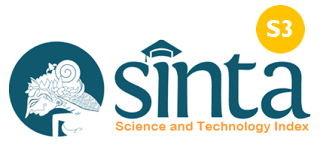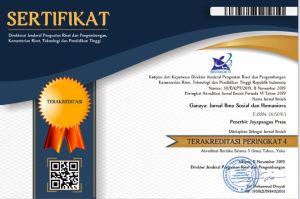The Impact of Grammar Knowledge on Student Proficiency in Malaysian Elementary Schools
DOI:
https://doi.org/10.37329/cetta.v8i1.3741Keywords:
Explicit Grammar Knowledge, Implicit Grammar Knowledge, English Language ProficiencyAbstract
This study aims to explore the relationship between explicit grammar knowledge and English proficiency levels among students. The study involved nine Indonesian teaching students who were divided into three groups, namely seven new teachers who were teaching English for the first time in elementary schools and two teachers who regularly taught English for communication. Data were collected through interviews and grammar assignments to assess their explicit grammar knowledge as well as their level of language proficiency. The results of the study showed that there was a tendency to associate explicit grammar knowledge and English proficiency. However, explicit grammatical knowledge is not the main determinant of proficiency level. In contrast, proficiency is more influenced by a combination of factors, such as individual preferences and study habits. Students who engage in implicit learning activities, such as regular communication and exposure to language in context, show higher levels of fluency than students who rely on explicit grammar instruction. Nonetheless, explicit grammatical knowledge remains important, especially in academic contexts that demand accurate and formal use of language. An approach that consciously integrates explicit grammar instruction is recommended to support skill development, especially in academic writing. In this way, implicit learning can improve fluency, while explicit learning favors accuracy and formal structure. In conclusion, combining explicit and implicit grammar knowledge into a balanced approach can improve overall fluency and accuracy. Teachers are advised to incorporate explicit grammar instruction into a context-based curriculum that supports immersive learning to optimize student language development.
References
Bialystok, E. (1998). Coming Of Age In Applied Linguistics. Language Learning, 48(4), 497-518.
Burns, A., & Richards, J. (2012). Pedagogy and Practice in Second Language Teaching. Cambridge: Cambridge University Press.
Cook, V. (2001). Second Language Learning And Language Teaching. London: Hodder.
DeKeyser, R. (2003). The Nature Of Implicit And Explicit Knowledge. Studies in Second Language Acquisition, 25(2), 327-348.
Ellis, R. (2004). The Definition And Measurement Of L2 Explicit Knowledge. Language learning, 54(2), 227-275.
Ellis, R. (2006). Current Issues In Teaching Grammar: An SLA Perspective. TESOL: Quarterly, 40(1), 83-107.
Ellis, R., Loewen, S., Elder, C., Erlam, R., Philp, J., & Reinders, H. (2009). Implicit And Explicit Knowledge In Second Language Learning, Testing, And Teaching. London: Multilingual Matters.
Ercetin, G., & Alptekin, G. (2011). The Explicit And Implicit Knowledge Distinction And Working Memory: Implications For Second-Language Reading Comprehension. Cambridge: Cambridge University Press.
Ellis, R. (2005). Measuring Implicit And Explicit Knowledge Of A Second Language: A Psychometric Study. Studies in Second Language Acquisition, 27(2), 141-172.
Ercetin, G. (2005). The Relationship Between Explicit And Implicit Knowledge Of Grammar And Second Language Proficiency. System, 33(2), 255-269.
Hu, G. (2002). Psychological Constraints On The Utility Of Metalinguistic Knowledge In Second Language Production. Studies in Second Language Acquisition, 24(3), 347-386.
Krashen, S. (2003). Explorations in Language Acquisition and Use. Portsmouth, NH: Heinemann.
Lightbown, P. M., & Spada, N. (2013). How Languages Are Learned (4th ed.). Oxford: Oxford University Press.
Macaro, E., & Martin, L. (2006). Does Intensive Grammar Instruction Make All The Difference?. Language Teaching Research, 10(3), 297-327.
Nassaji, H., & Fotos, S. (2011). Teaching Grammar In Second Language Classrooms: Integrating Form-Focused Instruction In Communicative Contexts. New York: Routledge.
Renou, J. (2001). An Examination Of The Relationship Between Metalinguistic Awareness And Second-Language Proficiency Of Adult Learners Of French. Language Awareness, 10(4), 248-267.
Roehr, K. (2008). Metalinguistic Knowledge And Language Ability In University-Level L2 learners. Applied Linguistics, 29(2), 173-199.
Swain, M. (2005). The Output Hypothesis: Theory And Research. Handbook of Research in Second Language Teaching and Learning. Mahwah NJ: Lawrence Erlbaum Associates.
White, L., & Ranta, L. (2002). L2 Grammar And Language Production: The Role Of Explicit Instruction. Toronto: University of Toronto Press.
Yoshida, R. (2009). The Role Of Explicit Knowledge Of Grammar In Second Language Learning. Language Learning, 59(2), 231-258.
Downloads
Published
How to Cite
Issue
Section
License
Copyright (c) 2025 Ryan Purnomo, Siti Nur Azizah, Ahmad Thoyyib Shofi, Ghanal Arief Rahmawan, Rizki Ramadhan, Muhammad Fauzi, Tri Septianto

This work is licensed under a Creative Commons Attribution-ShareAlike 4.0 International License.
An author who publishes in the Cetta : Jurnal Ilmu Pendidikan agrees to the following terms:
- Author retains the copyright and grants the journal the right of first publication of the work simultaneously licensed under the Creative Commons Attribution-ShareAlike 4.0 License that allows others to share the work with an acknowledgement of the work's authorship and initial publication in this journal
- Author is able to enter into separate, additional contractual arrangements for the non-exclusive distribution of the journal's published version of the work (e.g., post it to an institutional repository or publish it in a book) with the acknowledgement of its initial publication in this journal.
- Author is permitted and encouraged to post his/her work online (e.g., in institutional repositories or on their website) prior to and during the submission process, as it can lead to productive exchanges, as well as earlier and greater citation of the published work (See The Effect of Open Access).
Read more about the Creative Commons Attribution-ShareAlike 4.0 Licence here: https://creativecommons.org/licenses/by-sa/4.0/.





